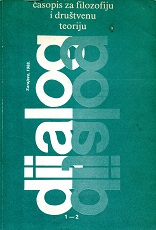Valhala, Kalvarija i Aušvic
VALHALLA, CALVARY AND AUSCHWITZ
Author(s): Shlomo Giora ShohamSubject(s): Christian Theology and Religion, Jewish studies, Theology and Religion, Studies in violence and power, WW II and following years (1940 - 1949), Fascism, Nazism and WW II, History of the Holocaust, History of Antisemitism
Published by: Akademija Nauka i Umjetnosti Bosne i Hercegovine
Summary/Abstract: In this work the author seeks for the explanation of the most monstrous crime in human history — the Holocaust, applying his core dialectics theory to the symbolic relationship between the Nazis and Jews. He thus claims that anti- -Semitism of the Nazis is related to the core dialectics of the German social character. The notion of »core dialectics« relates to the author’s core personality theory in which a basic distinction is made between the »separant« and »participant« personality types. This distinction is then applied to group relationships, where German social character is tabled separant and the Jewish participant. The author stresses that in accordance with their separant traits the Germans, having rejected Christianity and the characteristically Jewish participant restraints of law and morality, were liable to accept Hitler and Nazism as reincarnations of the old Germanic mythological values expressed in the amorality of the Northern Gods of war and the pagan tribal family of Aesir in which everything was permitted and where only power counted. On the other hand, a conspicuous characteristic of the Jewish social character is their tendency towards sacrificing themselves, the tendency initiated by Jesus Christ as the archetypal participant victim. The clashes between the Jews and European separant societies, which had started as early as 332. B. C. when Alexander conquered Palestine, resulted in the widest possible range of conflicts, where the Holocaust was the last and the most horrible one in the series.
Journal: Dijalog - Časopis za filozofiju i društvenu teoriju
- Issue Year: 1988
- Issue No: 01+02
- Page Range: 81-91
- Page Count: 11
- Language: Bosnian

